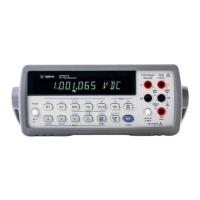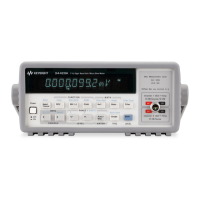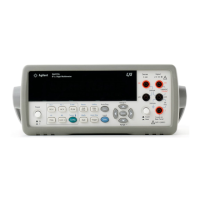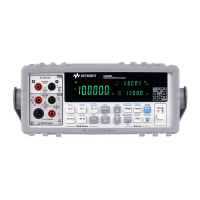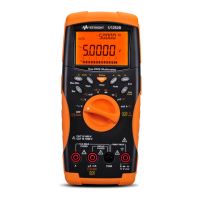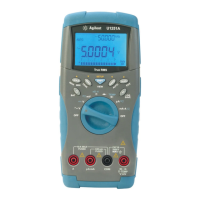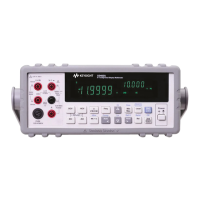Chapter 6 Command Reference 249
SWEEP
sample to the next. For sub-sampling, the valid range of this parameter is 10E-9
to 6000 seconds with 10ns increments; for all other measurement functions the
range is ( l/maximum reading rate) to 6000 seconds in 100ns increments.
Power-on effective_interval = 100E-9
Default effective_interval = 20µs
#_samples
Specifies the number of samples to be taken. The valid range for this parameter
is 1 to 1.67E+7.
Power-on #_samples = 1024
Default #_samples = 1024
Remarks • The minimum effective interval for DC voltage measurements is 10µs; for
direct-sampling, 20µs; for sub-sampling, 10 nanoseconds.
• The SWEEP command can be used to replace the NRDGS n,TIMER command
and the TIMER command. The SWEEP and NRDGS are interchangeable; the
multimeter uses whichever command was executed last in the programming.
Executing the SWEEP command automatically sets the sample event to TIMER.
In the power-on, RESET, or PRESET state, the multimeter uses the NRDGS
command. The power-on values for SWEEP can only be used for sub-sampling
(since NRDGS does not apply to sub-sampling).
• You cannot use the SWEEP or TIMER functions for AC or AC+DC voltage
measurements using the synchronous or random methods (SETACV SYNC or
RNDM) or for frequency or period measurements.
• When using the SWEEP command (or TIMER event), autoranging is suspended
(typically you should select a fixed range when using SWEEP).
• Query Command. The SWEEP? query command returns two responses
separated by a comma. The first response is the specified effective_interval. The
second response is the specified #_samples. Refer to "Query Commands" near
the front of this chapter for more information.
• Related Commands: FUNC, NRDGS, TIMER
Example In the program on the following page, the SSAC command is used to digitize a
10 kHz signal with a peak value of 5V. The SWEEP command instructs the
multimeter to take 1000 samples (Num_samples variable) with a 2µs
effective_interval (Eff_int variable}. The measurement uses the default level
triggering for the sync source event (trigger from input signal, 0%, AC-coupling,
positive slope).
Line 120 generates a SYN event and transfers the samples directly to the computer.
Lines 240 through 410 sort the sub-sampled data to produce the composite
waveform. The composite waveform is stored in the Wave_form array.
10 OPTION BASE 1 !COMPUTER ARRAY NUMBERING STARTS AT 1
20 INTEGER Num_samples,Inc,I,J,K,L!DECLARE VARIABLES
